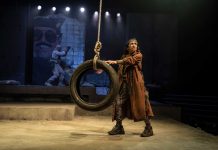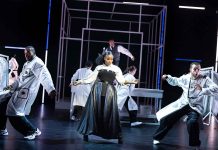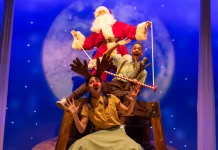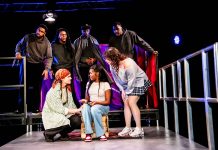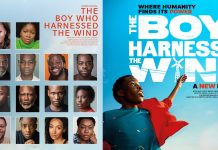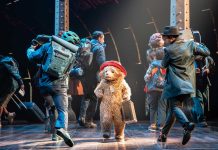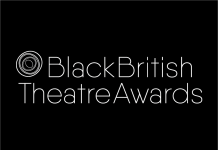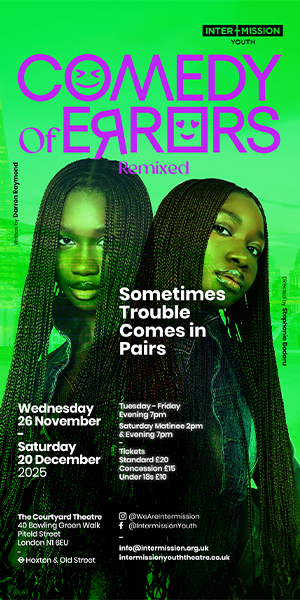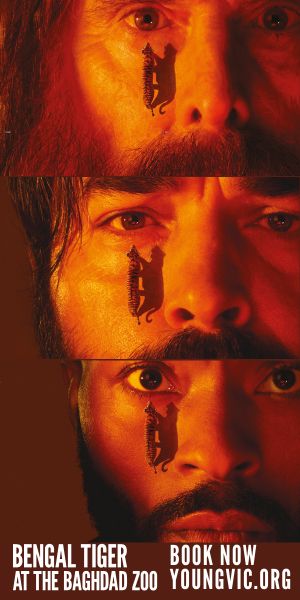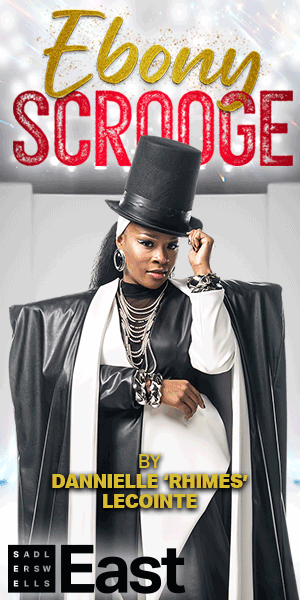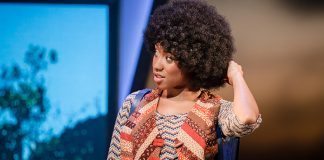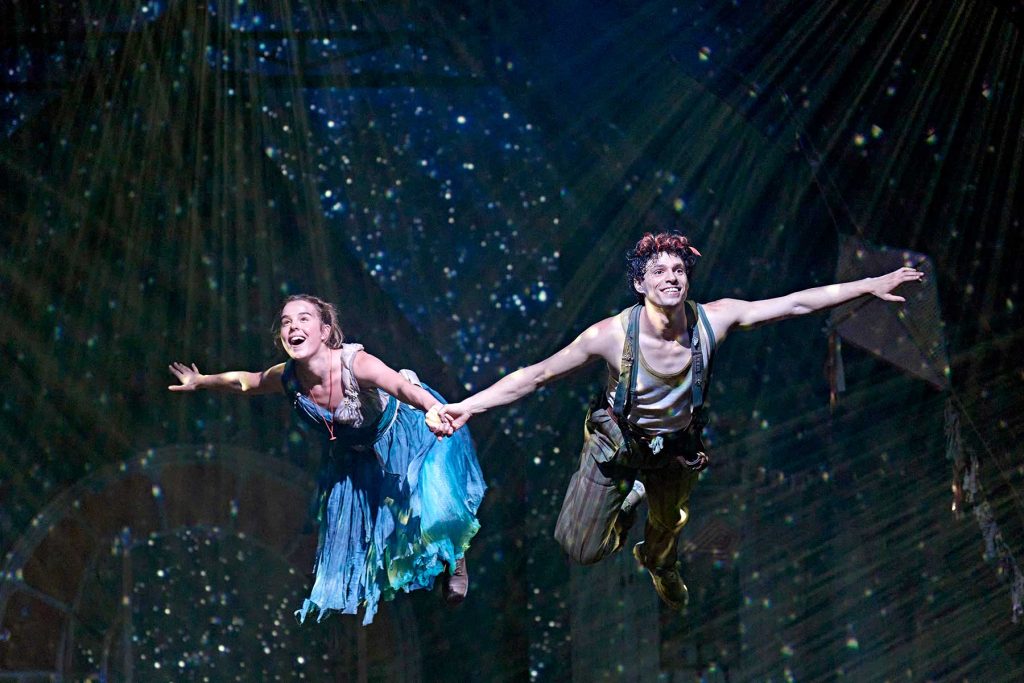
The Barbican played host to the Royal Shakespeare Company’s Wendy & Peter Pan, Ella Hickson’s adapted version of J.M. Barrie’s beloved book.
It is 1908, London, and we are situated within an idyllic Victorian, attic bedroom; adorned with stained glass windows, a doll’s house, high flying kites, a flag waving Teddy bear, a wardrobe capable of transporting you to other realms, four paper birds – hovering above four patchwork-quilted beds, and a small pirate ship – lit down stage centre. This children’s paradise, (designed by the skilful Colin Richmond), would meet with Mary Poppins’ high approval.
The bedroom is full of whimsy, shrieks of laughter and home to the Darling family; rambunctious John (Fred Woodley Evans), wide-eyed Tom (Alexander Molony) quizzical Michael (Kwaku Mills) and boundary pushing Wendy (Hannah Saxby). We first meet the enchanting Tom, while he is playing alone with his pirate ship; riding turbulent waves and foreshadowing a life changing journey, which all the protagonists will embark on.
Mr and Mrs Darling (Toby Stephens and Lolita Chakrabarti) enter and interrupt the youthful action by putting their children to bed. The Darling’s secure and loving familial unit would soon be upended by Tom’s short and tragic passing during the night. Whilst the children slumber a storm rages and blows Peter Pan (the boy who refuses to grow up) through the Darlings window. Alongside Peter are several mischievous Shadow selves, who are there to escort Tom to the ‘other side’, to find his Neverland – where he can ultimately transition into a Lost Boy. Despite the physical and verbal objections from fairy Tink (played by the highly engaging Charlotte Mills), Peter and Wendy become smitten with each other. Wendy planning a rescue mission and Peter seeking comfort in a kiss.
The intricate flying scenes directed by Floyd Hughes and the quirky /characterful movement sequences by Lucy Hind all help to push the narrative and aid with seamless transitions. Examples of this can be seen in the mirroring and unison work presented by the Shadows and through the elusive Tink, zipping across the space, like a laser beam.
In the cold light of day, the Darling’s world crumbles under the enormity of their sadness and grief: its buried in alcohol, arguments and emotional distance, the joy they all once revelled in, is stripped from their home. Wendy is hell bent in finding Tom and is longing for Peter and the Lost Boys to return and take John, Michael and her to Neverland to rescue him.
It is at this juncture where the energy of the play shifts in gear. Peter and his Shadows return to the Darling’s home and bring Wendy and her brothers to Neverland. Wendy is thrilled to be in pursuit of Tom, but Peter has ulterior motives in bringing Wendy to his secret hideaway, much to the dismay of the disgruntled Tink, (the envious fairy who part Hell’s Angel, part pantomime dame). A magical flying sequence unfolds as the shift in energy echoes the transition in location. To mark this impressive change a huge tree is flown in, which is both imposing and the central symbol of life in Neverland.
Wendy & Peter Pan is a hybrid play; part farce, part pantomime, a heightened piece of theatre, includes elements of stand up, and still delivers pathos and heart.
The ensuing action results in fraught confrontations with Captain Hook and his pirate gang. (Peter’s arch enemy played deliciously by Toby Stephens). Imagine Hook as the character Scar, (from the Lion King) who has a love child with Lawrence Olivier. Stephens displays great theatrical and comic timing, especially when sharing scenes with his side kick Smee (charismatically played by Scott Karim). However, the text can sometimes rely too heavily on stereotypical gay tropes to get laughs i.e. the camp, gay bachelor (Smee) doomed to romantically pine for the affections of Captain Hook – affections that go unrequited.
There are several stand out moments in the play e.g. the Lost Boys interactions with the pirates; the crocodile dressed in a top hat, long reptilian dress-coat and a pocket watch; and the highly physical fighting scenes, which were both thrilling and comic.
Hickson’s feminist adaptation interrogates traditional gender roles and expectations of adulthood. She questions the place of girls and women in society, through her protagonists, Wendy (played by the passionate and dynamic Saxby) and Tiger Lily (embodied by the fierce and committed Ami Tredrea). Questioning why women are not empowered to have space to play, explore and live up to their true potential. Hickson looks at how patriarchy and toxic masculinity hide the deep feelings of boys and men – supressing their inner most thoughts and disguising them in play, banter and/or divisive tactics.
The narrative is anchored in grief and explores the burying of emotions, drowning in sadness and not allowing the excavation of ones feelings. Hickson skilfully manages to balance out the impact of loss with the energy of youthful exuberance through slapstick comedy, heroic adventure and dream fulfilment.
Wendy & Peter Pan has so many elements to commend such the audaciously bold portrayal of Peter Pan by Daniel Krikler, the adroit ensemble, the sumptuous music score by Shuhei Kamimura, and the well-crafted direction by Jonathan Munby.
Take a flight of fancy and see this inspiring production.






